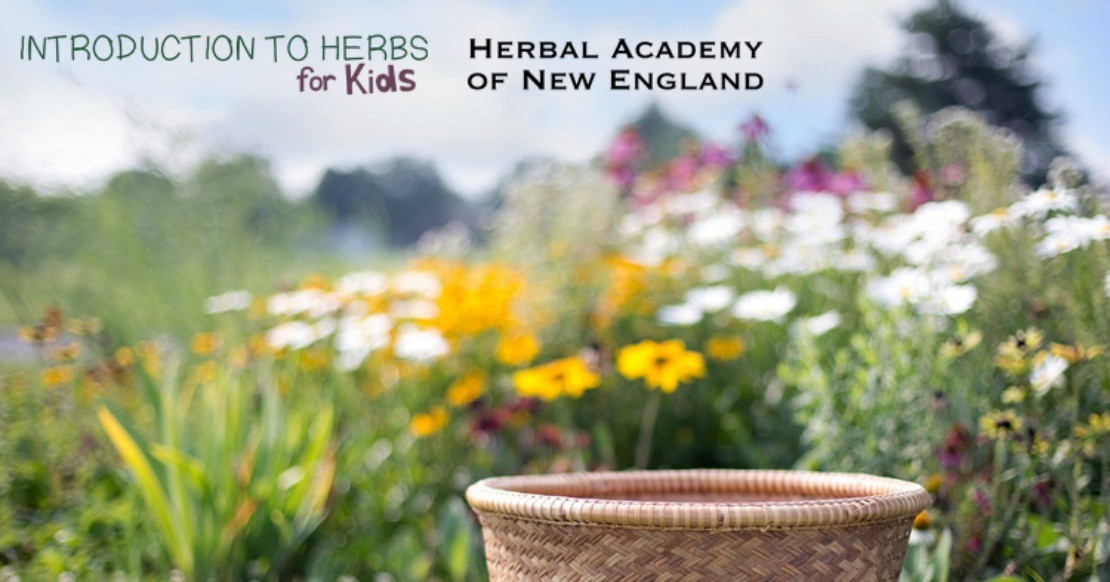
Introduction To Herbs For Kids: Start Your Herb Garden
Make a home for your new best friends!
Have you ever watched a little seed sprout into life? Have you seen a baby plant grow into a big, beautiful plant? It is magical! You can be a gardener and help little plants grow! Invite some of your newly found herb friends to grow in your garden and take care of them so they will grow up healthy and strong.
If you have been following along with our Introduction to Herbs for Kids series, then you know that we have already explored a lot of the herbal world together. We have learned about making special friends with herbs as well as how to make some wonderful, fun things from our herbal friends plus much more. Growing herbs is also a wonderful way to work with plants and add to your herbal knowledge. Growing your own herbs is another way to learn about the plants in which you get to interact with them while they are fresh and vital. Using fresh herbs is a true delight because they are full of life, fragrance and flavor. Are you ready to start your own garden? Let’s go!
Special Herbal Terms:
Chlorophyll: A substance inside plants that makes them green and catches the sun’s energy (which the plant uses to make food).
Culinary Herb: An herb commonly used to flavor food.
Edible: This means that it is okay to eat. However, always check with an adult before eating plants.
Insomnia: Not being able to sleep or having a hard time falling asleep.
How To Grow A Garden
Your garden can be as big as a large plot of land or as small as a little garden pot. Whatever space you have to offer is the perfect space. There are some basic guidelines to follow when planting and caring for a garden. We will talk about a few of them. If you want more information about how to have a beautiful herb garden, there are plenty of books to read that are full of useful tips. You can also ask folks working at your local plant nursery and at your local extension county office for help.
Helpful gardening books:
- Roots, Shoots, Buckets & Boots: Gardening Together With Children by Sharon Lovejoy
- A Kid’s Guide To How Herbs Grow (Digging In the Dirt Series) by Patricia Ayers
- Growing 101 Herbs That Heal by Tammi Hartung
- The Medicinal Herb Grower by Richo Cech
- Rosemary Gladstar’s Medicinal Herbs: A Beginner’s Guide: 33 Healing Herbs To Know, Grow and Use by Rosemary Gladstar
Step One: Make A Plan
Before you get outside and start digging, it is a good idea to do a little planning. What kind of space do you have for a garden? What herbs are you interested in growing? Will those herbs grow well in the space you have available? Draw your plan out on a piece of paper or use the activity sheet below to help you make your plan. Also remember to get your parent’s permission and help before starting your garden!
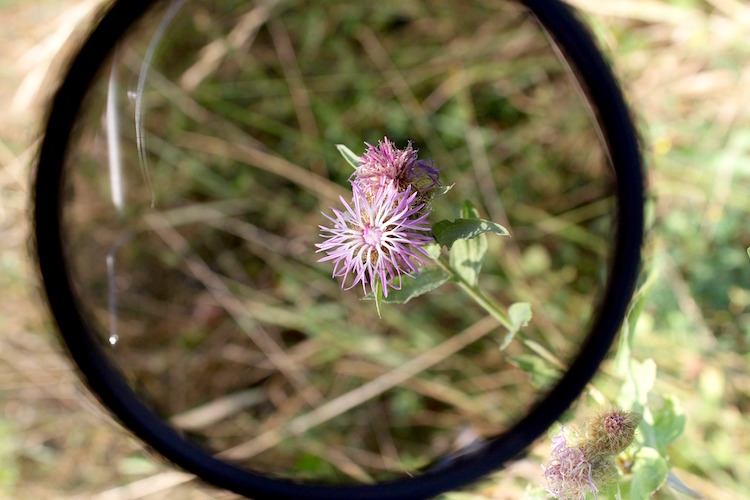
Step Two: Know What Your Herb Friend Needs
What are the basics things that a plant needs to grow happily in your garden? From our botany lesson we know that plants have roots for drinking up water, minerals, and vitamins from the soil. Plants also have leaves that are rich in green chlorophyll that catches energy from the sun to help the plant make its own food. So we know that in order for our herb friends to grow successfully they need to have enough sunlight, water, vitamins and minerals.
Plants need more or less of each of these things depending on where they like to grow. Some plants like to grow right out in the hot sun while some prefer to live in a cool shady area. Some plants need lots of water and other like less water. Doing a little research about what your plant needs to grow healthy and strong will help you pick the best place for planting. Look at the chart below to see what the herbs you want to plant need to be happy and then pick a spot in your garden for them that they will like.
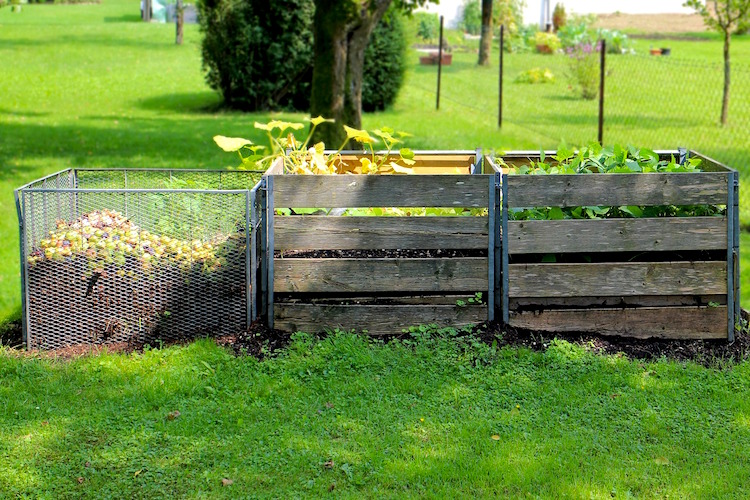
Step Three: Make Your Bed
Have you heard of a garden bed? This is the special place where your plants will grow. It is important to make sure the soil you have in your bed is ready for the plants. You will need to dig up the soil especially if it is compacted down. The soil in my yard is hard and thick with clay. So every time I plant something in a new area, I start by spending time digging up the soil and turning it over. Then I add things to the soil that plants like such as topsoil, compost, egg shells, coffee grounds, and even manure. You can find out what the soil in your area needs to make a great garden bed by visiting your local plant nursery. Also, before you start digging be sure to have your parent’s permission.
Step Four: Plant Your Garden
You can buy little seedling plants or grow herbs from seed. You may be able to find seeds and seedlings in your local area. If you can’t find them from local folks, here are some wonderful places to purchase them online.
Online resources for seeds and plants:
When you buy seeds to sprout or plants to grow there is usually information on the seed packet or with the plant that will tell you about the plant’s water, light and soil requirements. Reading this information is a great way to find out what your plant friend needs to be healthy and happy. In our next lesson we will talk about some fun ways to sprout seeds at home.
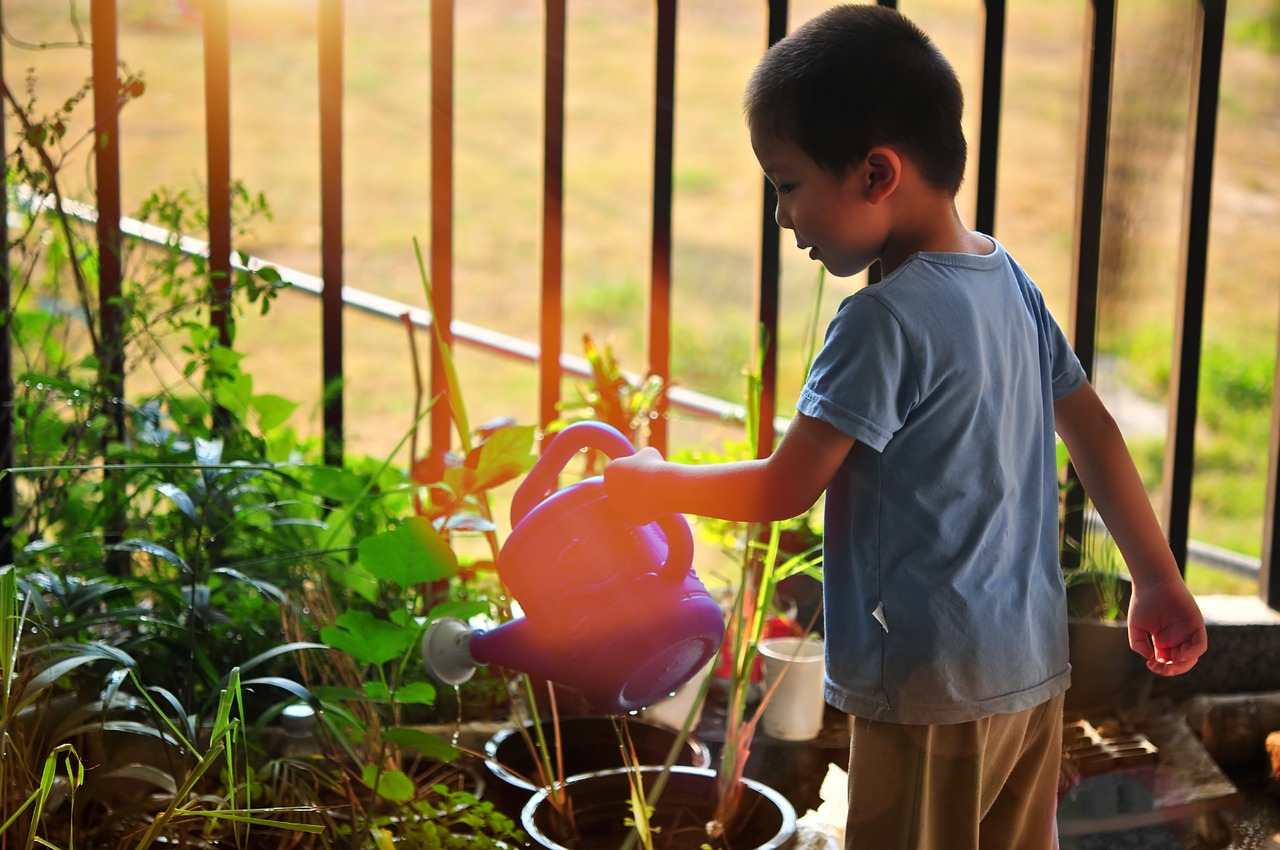
Tools For The Garden
When growing a garden, it is helpful to have some handy tools to help you get the job done right. You and your parent may want to gather up some of these tools before you make your bed or plant your plants so that you will be well prepared. Tools to consider having on hand include: a hose or watering can, spade, shovel, garden fork, hand weeder, and a basket or bucket for moving around large amounts of material such as soil, mulch and eventually your harvested plants!
Step Five: Take Care!
Once your garden is planted, be sure to take good care of your herb friends. Visit your garden every day to give your herbs water and to pull up any unwanted plants that may have found their way into your garden bed. While you are there, take some time to say “hi” to your herb friends. Do you notice how is the garden changing day to day? You may want to draw the plants, take pictures over time or make some notes about their growth.
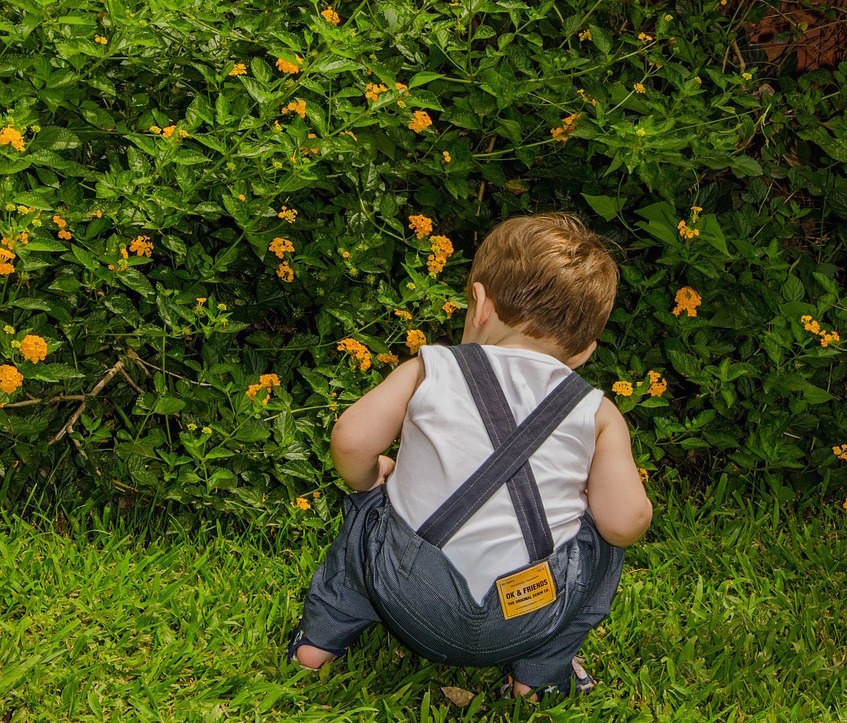
Favorite Plants For A Child’s Herb Garden
Here is some very basic information to help guide you towards herbs you may want to invite to grow in your garden. Visit your local nursery or look at gardening books for further information about the herbs you want to grow.
| Herb | Light Needs | Water Needs | Common Uses | Fun Kid Uses |
| Anise Hyssop – Agastache foeniculum | full sun to part shade | dry to moderate | helps upset tummies & coughs | munch tasty licorice flavored leaves |
| Basil – Ocimum spp. | full sun | dry to moderate | delicious pesto | add leaves to salads and even orange juice |
| Borage – Borago officinalis | full sun to part shade | moderate | cooling and good for healing skin issues | tasty fairy flowers, add them to salads, freeze them in ice cubes or just munch on them |
| Calendula – Calendula officinalis | full sun | dry to moderate | best known for skin and wound healing | the seeds are really neat and it is fun to add the petals to baked goods |
| California Poppy – Eschscholzia californica | full sun to part shade | dry to moderate | gently relaxing for the nervous system | the seed pods are very cool looking, see if you can find them growing |
| Catnip – Nepeta cataria | full sun to shade | dry to moderate | best known for driving kitties crazy | leaves are gently relaxing, add them to your bedtime bath |
| Chamomile – Matricaria chamomilla | full sun to part shade | moderate | great for upset tummies and nerves | the beautiful flowers have an apple-y smell and are fun to harvest |
| Chickweed – Stellaria media | part shade to shade | moist | tasty spring green | makes a great spit poultice for stings and bites |
| Chives – Allium schoenoprasum | full sun to part shade | moderate | mild onion flavored culinary herb | flowers are a neat ball-like shape that are fun to pull apart and eat |
| Fennel – Foeniculum vulgare | full sun | dry to moderate | the seeds are used to help digestion | munch on a stalk of fennel for a juicy licorice flavored treat |
| Hollyhock – Alcea rosea | full sun to part shade | moderate | helps to ease dry coughs | make pretty flower dolls with hollyhock’s flowers |
| Lavender – Lavandula angustifolia | full sun | dry | wonderful for easing stress and insomnia | use the flowering stalks to make beautiful, fragrant wands |
| Lemon Balm – Melissa officinalis | full sun to part shade | moderate | helps with colds and also calming | add a few stalks of fresh lemon balm to a pitcher of water for a delightfully flavored drink |
| Marshmallow – Althaea officinalis | Full sun to shade | moderateto damp | used for sore throats, coughs and digestive issues | make your own herbal marshmallows with the roots |
| Mints – Mentha spp. | Full sun to shade | moderate to moist | used for digestive problems | cooling and yummy, munch the leaves or add them to fruit salad |
| Mullein – Verbascum thapsus | full sun | dry to moderate | used to help soothe earaches | the leaves are soft, sweet and make great fairy blankets |
| Oat – Avena sativa | full sun | moderate | used to nourish and heal the nervous system | harvest the milky tops to make delicious tea |
| Pansies – Viola tricolor | full sun to part shade | moderate | used for coughs | edible fairy flowers to eat, play with, and crystalize in sugar |
| Rosemary – Rosmarinus spp. | full sun | dry to moderate | can be help to soothe headaches and belly aches | chop up the fragrant leaves for a pizza topping, yum |
| Sage – Salvia spp. | full sun | dry to moderate | wonderful for sore throat | make into a healing compress |
| Self Heal – Prunella vulgaris | full sun to part shade | moderate to moist | used as a wonderful skin healing herb | make into a compress or poultice |
| St. John’s Wort – Hypericum perforatum | full sun | moderate | helps to heal damaged nerves and to help people feel happy | make an infused oil from fresh yellow flowers and watch as the oil turns red |
| Sunflower – Helianthus annuus | full sun | dry to moderate | most well known as a tasty food | plant a sunflower house |
| Thyme – Thymus vulgaris | full sun to part shade | dry to moderate | used for infections | wonderful ground cover for fairy or dragon gardens |
| Violet – Viola odorata | part shade to shade | moderate to moist | helps ease coughs and soothe the skin | edible fairy flowers to eat, play with, and crystalize in sugar |
This chart was generated with growing information from: Tammi Hartung, Richo Cech, and Patricia Michalak.
An Extra Special Note About Mints, Sages, and Thymes
There are a great many varieties of mints, sages and thymes to choose from when planning your garden.
Mints – Beyond peppermint and spearmint, our favorite mint is apple mint. It has the sweetest fuzzy leaves and a wonderful flavor. We also love chocolate mint, orange mint, pineapple mint, and ginger mint.
Sages – Regular garden sage is a wonderful plant to grow but you might also want to consider pineapple sage or the lovely tricolor sage.
Thymes – Lovely thymes to consider are delightful lemon thyme, golden lemon thyme, orange thyme, French and English thyme, the super tiny minus thyme, and wooly thyme.
Be aware that mints spread readily and will gladly expand into whatever garden space is available to them.
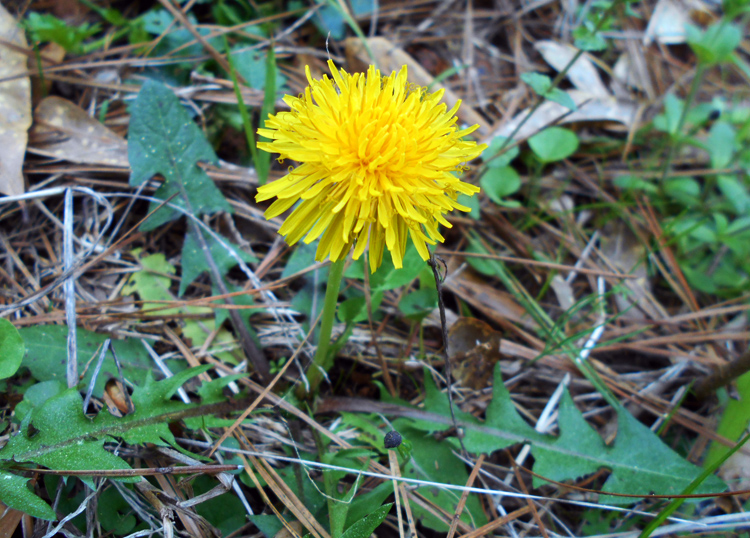
Step Six: Leave It Alone
There maybe be some helpful plants growing in your yard already that can be used as herbs! Sometimes these plants are considered to be weeds but herbalists know better. If you find any of these plants and they are growing in a place that is okay for them to stay and grow, then you may want to just leave them alone.
Some examples of helpful plants to keep an eye out for are:
- Dandelion
- Plantain
- Red Clover
- Alfalfa
- Lamb’s Quarters
- Thistles
- Wild Lettuce
- Chicory
- Nettle
What is a weed?
One of my wise teachers once told me that a weed is any plant that is growing in a place where you don’t want it to be. Perhaps it is just a new friend that we don’t know enough about yet?
Activities For Kids Of All Ages
Garden Planning Activity
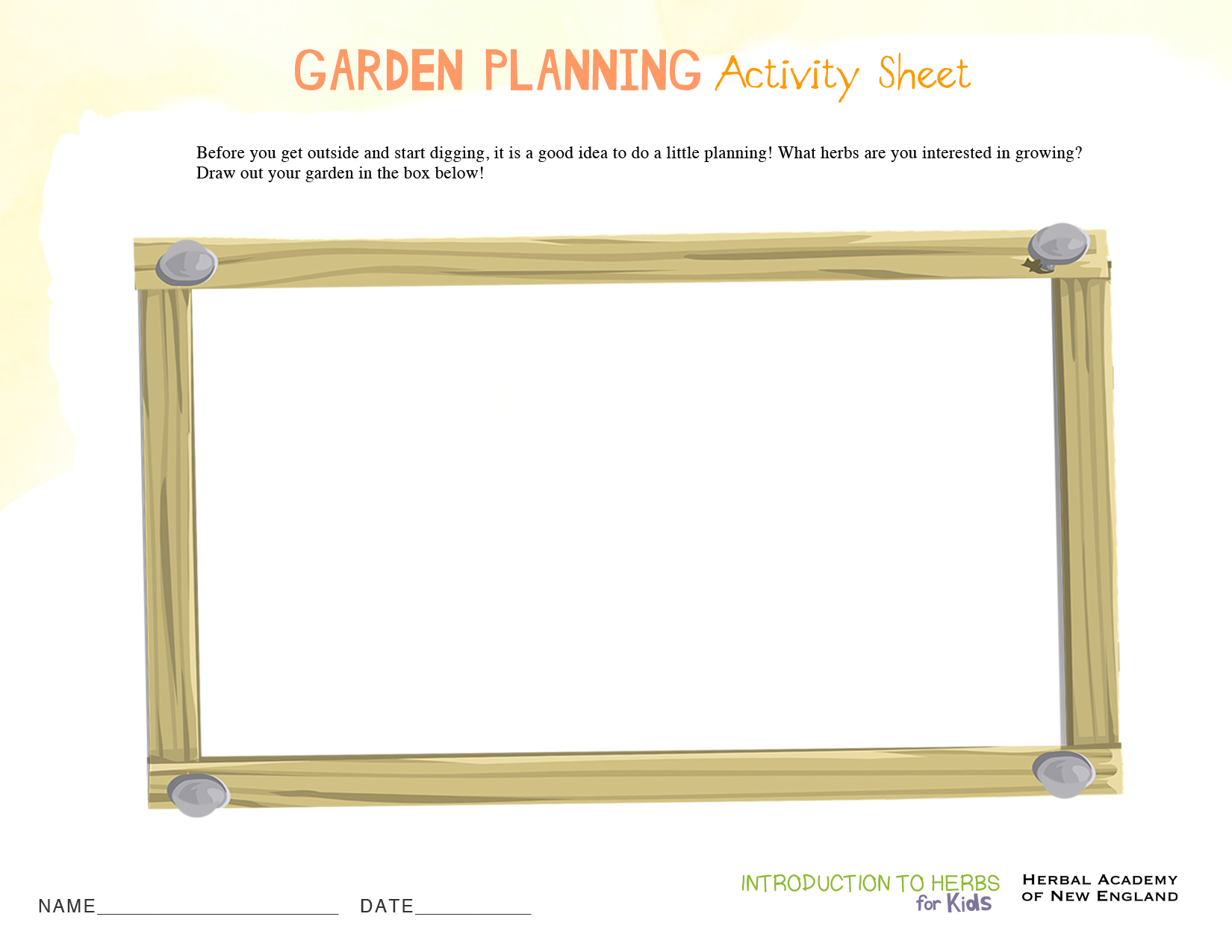
It’s time to plan your garden! Download the Garden Planning Sheet to get started!
Note To Parents:
This week’s lesson is about more than simply growing herbs. Gifting your child with their own little plot of land to grow plants is a great way to teach them about much more than just herbs — gardening is a way to ignite that magic spark that all children have for the Earth and its beauty.
As a child, one has that magical capacity to move among the many eras of the earth; to see the land as an animal does; to experience the sky from the perspective of a flower or a bee; to feel the earth quiver and breathe beneath us; to know a hundred different smells of mud and listen unself-consciously to the soughing of the trees.
– Valerie Andrews, A Passion for this Earth
Keep It Safe! While your child explores in their very own garden, please be sure to keep your little ones safe. Remind them that not all plants are safe to touch, play with, and eat. They should always check with a knowledgeable adult about the safety of plants before touching or eating them.
During this exciting time be sure to have your child take care of their own little plot of land. Encourage them to check it each day and notice the changes occurring. Perhaps they can keep a notebook to help them record what is happening.
Resources for herb gardening and how to steward this incredible Earth on which we all live:
Gardening How To’s:
- 5 Steps To Starting Seeds
- Easy Seed Starting Guide
- How To Harden Seedlings & Protect Your Garden
- Secrets To Transplanting Seedlings: 3 Tips To Success
- Sticks & Stones: Homemade Plant Markers
- How To Compost: Getting Started Guide
- What Is Compost Tea? Plants Drink Tea Too!
- 5 Simple Ways To Conserve Water For Your Garden
Herb Gardening Resources:
- 5 Easy Herbs To Grow
- Herbs That Grow In The Shade
- Companion Planting Herbs
- How To Start An Indoor Herb Garden
Insects In The Garden
Did you know that The Herbal Academy Of New England offers affordable online courses in herbalism? The Introductory Herbal Course is perfect for anyone new to herbalism while the Intermediate Herbal Course will help to increase knowledge and sharpen the skills of those who already have a knowledge base. We also offer a beautiful and extensive Herbarium for in-depth research.
REFERENCES:
Andrews, Valerie. (1990). A Passion For This Earth: Exploring A New Partnership Or Man, Woman And Nature. New York: Harpercollins.
Cech, Richo. Growing Information Retrieved from https://www.horizonherbs.com/
Hartung, Tammi. (2000). Growing 101 Herbs That Heal. Vermont: Storey Books.
Michalak, Patricia S. (1993) Rodale’s Successful Organic Gardening: Herbs. Pennsylvania: Rodale Press.








